Control MOOD SWINGS With These Yoga Asanas:
Jump To:
Mood swings are common and it is totally normal to feel/ experience different emotions at different times. Women experience an array of emotions for mysterious reasons. It is commonly referred to as mood swings. Also, women who experience menopause are most likely to have mood swings. However, there are numerous ways to control moods, and practicing yoga is one such way to do so. Here are three helpful yoga asanas for mood swings, yoga for self-control.
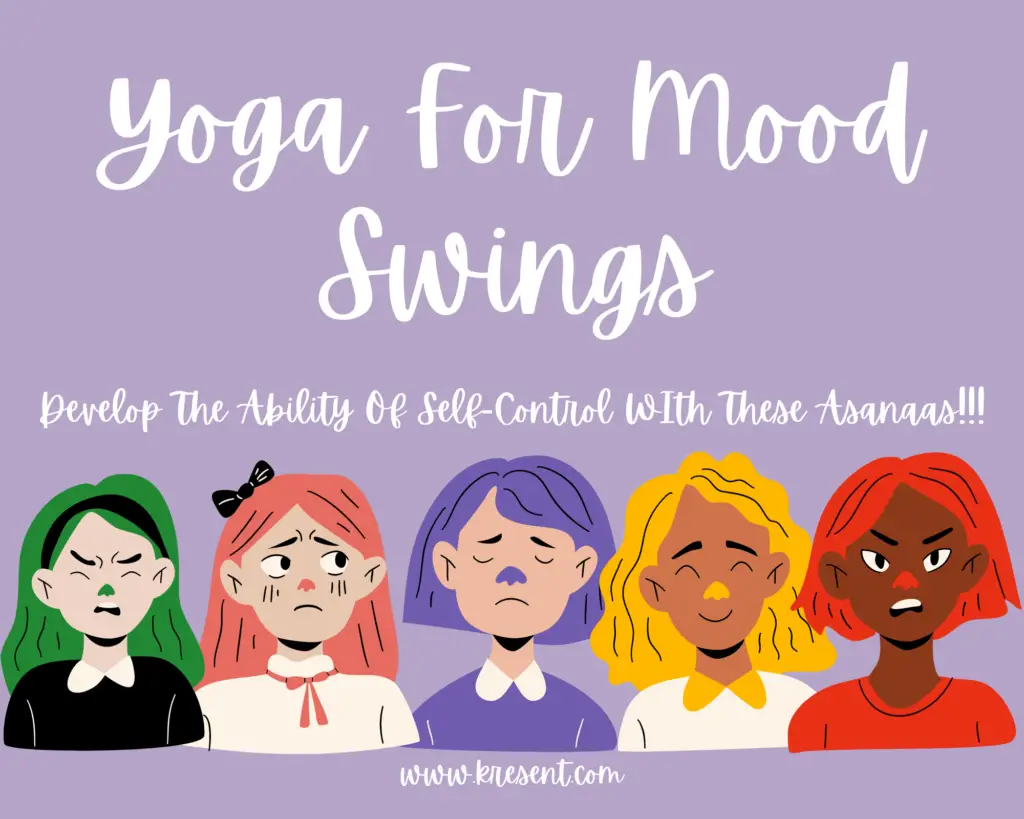
Research has found that practices like meditation and yoga benefits people by calming their emotions and regulating their stress, which is the main culprit of mood swings. There are several yoga poses that are known to curtail stress by developing the ability of self-control.
Yoga For Mood Swings:
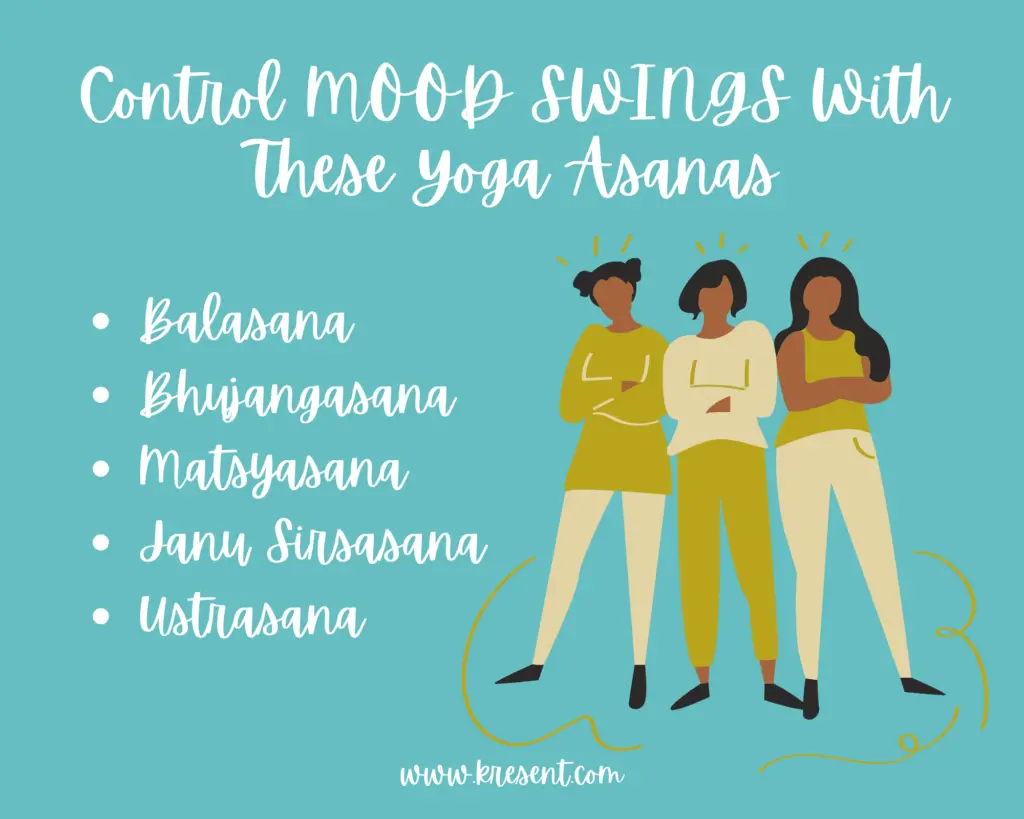
1. Balasana:
Practicing balasana is a great way to calm your mind. It is also one of the most commonly practiced yoga poses. This asana stretches your thighs, hips, and back that helps release endorphins and produces a calming effect on the mind.
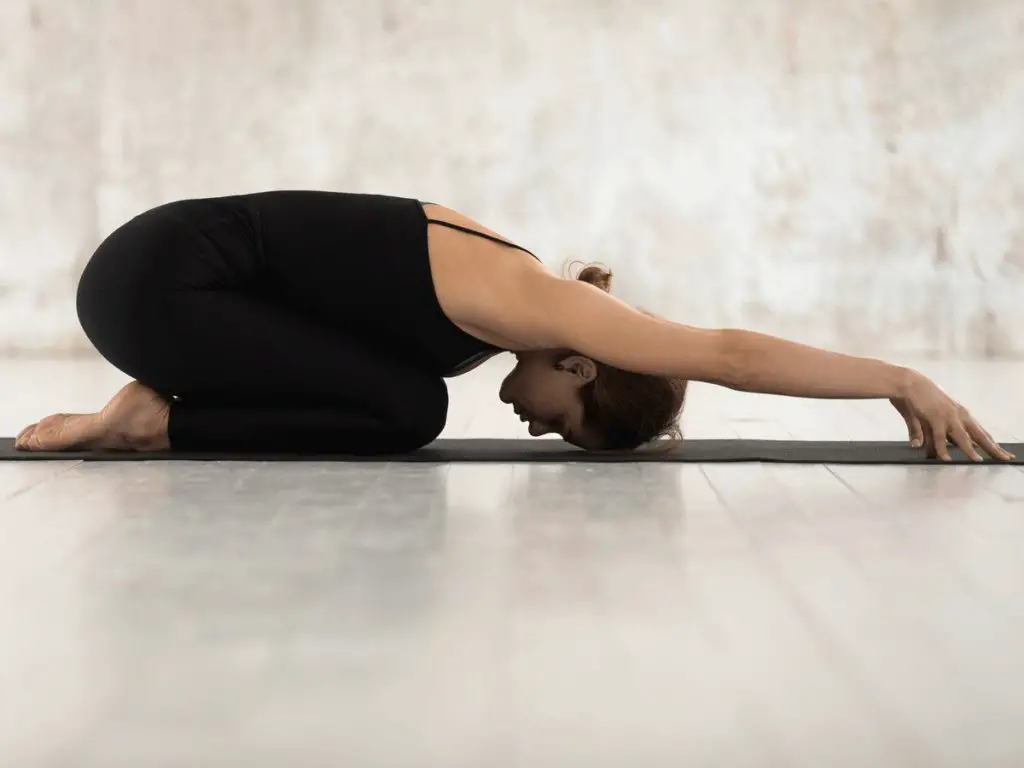
- Sit down on your knees and join the thighs, knees, big toes with hips on the heels left distant comfortably.
- Place your palms on the floor and move the knees wide. (If your hips are not touching the heels place a bolster under the feet)
- Inhale; raise your arms stretching the spine.
- Exhale; bend your torso forward and rest it on the floor between the knees. Keep your palms one above the other and place on the floor above your head stretching hands fully. (If you’re not comfortable resting on to the floor place a bolster in between the knees)
- Breath deeply for 1-2 minutes in this position. Make sure you’re not forcing the pose.
Release the pose with an inhalation raising the arms up and as you exhale lower the arms and release the pose.
2. Bhujangasana:
Yoga poses such as this one expands your chest and reduces fatigue and stress. This asana helps to massage the adrenal gland and makes it function better. As a result of this, your body will be able to fight stress and get rid of tension.
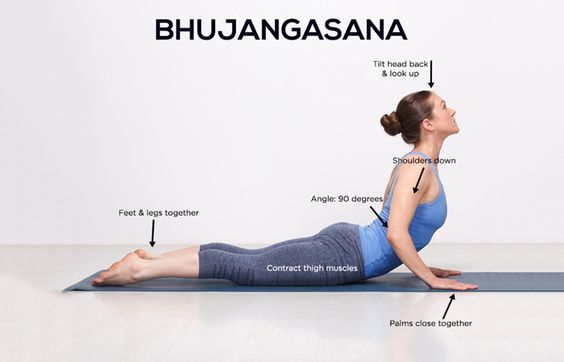
- Lie down on your belly with legs hip-distance apart.
- Place your palms a little ahead of your shoulders with elbows on the floor.
- Inhale; internally rotating the thighs in, press the legs down on the floor. See that the toes pressing down with ankles are lifted up.
- Tuck the tailbone down by drawing the pelvis in towards the body.
- Exhale; press the palms into the floor and lift the torso up lengthening it. You’ll see you are squeezing the thighs but make sure you relax the hips muscles.
- Then open the chest wide, with shoulders rolled back down towards hips and away from ears.
Hold this pose for five to ten breaths and then release the pose and rest.
3. Matsyasana To Ease The Causes Of Mood Swings:
This pose is very good for those suffering from anxiety and pains and aches that are the causes of mood swings. It improves the blood flow to the brain, which can help one tackle bad moods. Additionally, practicing this asana before bedtime, helps you get a good night’s sleep.
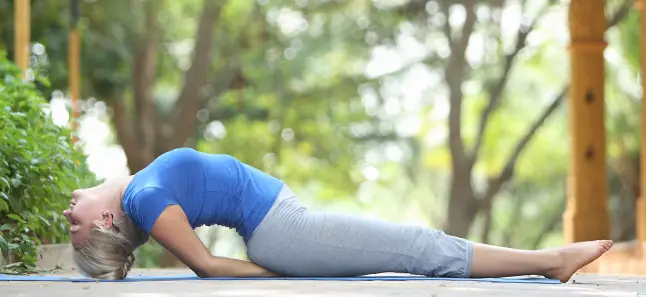
- Lie down on your back, with the spine and back of the head resting on a bolster and hips rest on the floor.
- Stretch the legs forward and keep them together extending toes outwards. Relax the shoulders and facial muscles.
- Lift your arms and stretch backward and raise the waist stretching the spine and armpits.
- Stay in this pose for 25 deep breaths.
Release the pose by lowering the waist, then bend the knees towards the chest and sit up.
4. Janu Sirsasana:
This yoga asana is very effective in calming the mind and providing relief from mild depression. Practicing this yoga pose will help you to relax your back muscles and spine. Apart from this, Janu Sirsasana also helps improve the digestive system and stimulates the liver and kidneys.
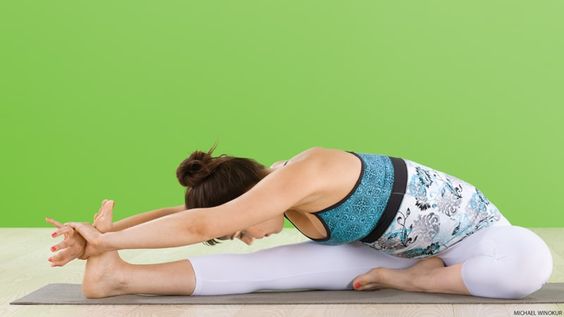
- Sit on the floor with legs stretched out together, in front comfortably.
- Now bend the right knee and place it close to the left inner thighs, ankle touching the groin.
- Inhale; lift the arms up parallel, palms facing downwards.
- Exhale; bend forward from the torso gently towards the left knee. Try and reach the feet of the leg stretched out (do not hold and pressurize). Gently place the hands beside the foot.
- Hold the pose breathing deeply for 10 breaths; release. Repeat on the left side.
5. Ustrasana:
This asana is known for its wide range of benefits and it is an excellent remedy for regulating hormones. It stimulates the internal organs of the body, especially in the neck where thyroid and parathyroid glands are situated.
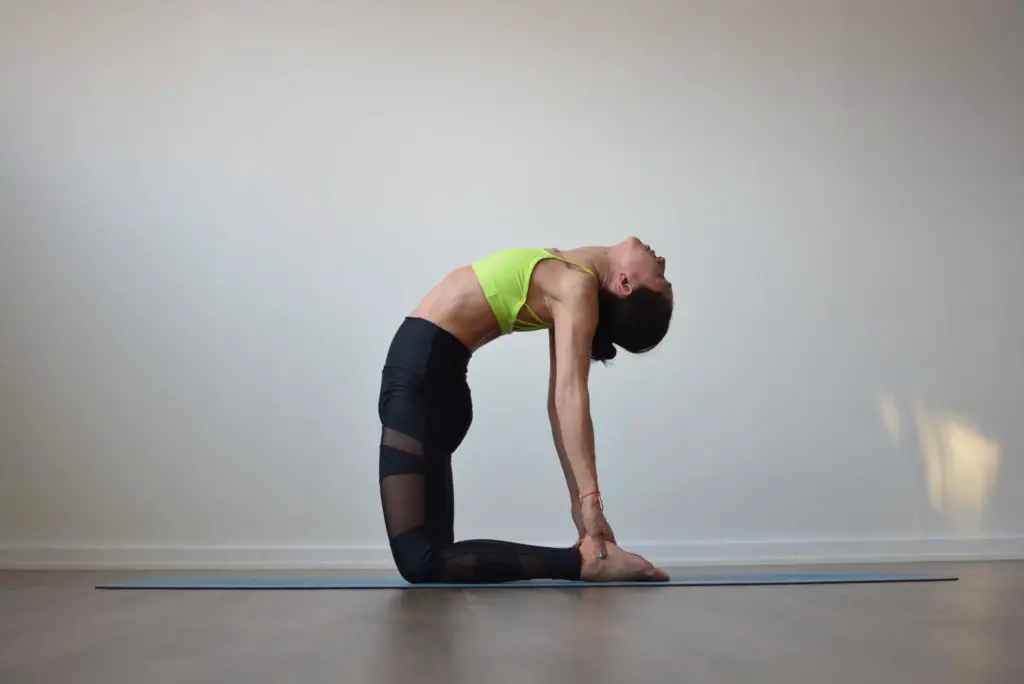
- Kneel on the yoga mat and place your hands on the hips. (You may place a cushion below your knees to ease your way into the pose.)
- Your knees should be in line with the shoulders and the sole of your feet should be facing the ceiling.
- Inhale; draw in your tail-bone towards the pubis as if being pulled from the navel.
- Simultaneously, arch your back and slide your palms over your feet till the arms are straight.
- Do not strain or flex your neck but keep it in a neutral position.
- Stay in this posture for a couple of breaths.
- Exhale; slowly come back to the initial pose. Withdraw your hands and bring them back to your hips as you straighten up.
Can yoga help control emotions?
You need to manage them, and yoga practice can help you do this. control of my mind, body and of cause my emotions, and it was the yoga pathway I begun. control back. Certain asanas can help lift your spirit or the opposite by calming you down.
Which yoga is for emotional management?
Savasana or the corpse pose is one of the best yoga asanas to calm your mind and body. This relaxing asana will help you control the anger.
Is yoga good for anger?
The good news is there are many healthy ways to deal with anger, and one of the most effective ways to release anger is yoga. In fact, according to a study published in Frontiers In Psychology, practicing yoga can help control anger and improve the impulses that surround anger.
Why is yoga good for your mental health?
Yoga strengthens parts of the brain that play a key role in memory, attention, awareness, thought, and language.
Does yoga reduce PMS symptoms?
A painful period can make you want to curl up in a ball, but head to the mat instead. Yoga may provide relief from common menstrual complaints like cramps and premenstrual syndrome (PMS), according to a new review of studies published in the Journal of Alternative and Complementary Medicine.
Can we do yoga during PMS?
Many people might ask, can you do yoga during your period? Well, the answer is yes, yoga during your period can be beneficial, especially if you’re experiencing uncomfortable symptoms.
Can yoga help in mood swings?
Studies show that yoga therapy can help with stress, anxiety, and depression. Yoga is a gentle exercise that incorporates both meditation and controlled, physical movements.
Why am I so angry before my period?
It is thought that hormonal changes in the menstrual cycle (fluctuations in estrogen and progesterone levels) affect the mood of women and trigger negative emotions such as anger and irritability.
Which yoga poses should be avoided during periods?
Yoga poses that should be avoided during menstruation include – Shirshasana, Sarvangasana, Dhanurasana, Halasana, Karnapeedasana, and Bakasana. Recommended asanas such as the following can be practised to improve your menstrual health without stressing your system.
